All ‘Buddhist Iconography’ posts
Friday, March 4th, 2011
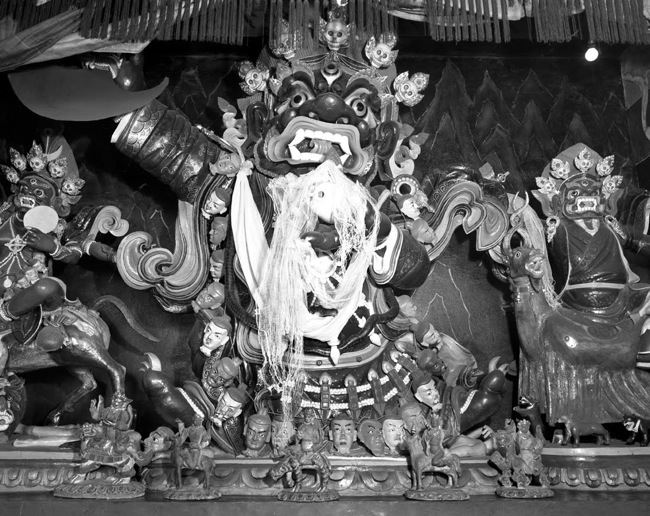
Mahakala statue in Rumtek Monastery (photo: Peter Mannox)
Tomorrow, 5 March 2011, marks “Losar” – Tibetan New Year 2138. We wish a happy and auspicious Year of the Female Iron Hare to all our readers.
According to Karma Kagyu tradition, on the last day of the Tibetan year, a day-long practice of Black Coat (Tib. Mahakala Bernagchen) is performed to clear away obstacles and negativity of the old year to foster positive circumstances and progress in Dharma practice in the year ahead. The picture above shows statues of the Karma Kagyu protectors – Black Coat is the central form, flanked by Radiant Goddess (Tib. Palden Lhamo) on the left and Good Diamond (Tib. Dorje Legpa) on the right.
(more…)
Tags: Losar, Mahakala, Rumtek Monastery, Tibetan New year
Posted in Buddhist Iconography, Diamond Way Buddhism | No Comments »
Thursday, February 24th, 2011
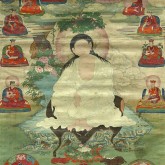
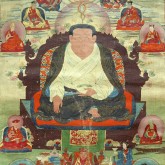
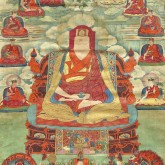
This set of three stunning 19th Century Tibetan thangka paintings (click on each to enlarge) was just posted to the Himalayan Art Resource website. The three composition painting set depicts the Karma Kagyu Great Seal (Skt. Mahamudra) Lineage ending with the 14th Gyalwa Karmapa, Thegchog Dorje (1798-1868).
(more…)
Tags: Gampopa, Great Seal, Himalayan Art, Mahamudra, Marpa, Milarepa, Thangkas
Posted in Buddhist Iconography, Kagyu Lineage | No Comments »
Saturday, February 5th, 2011
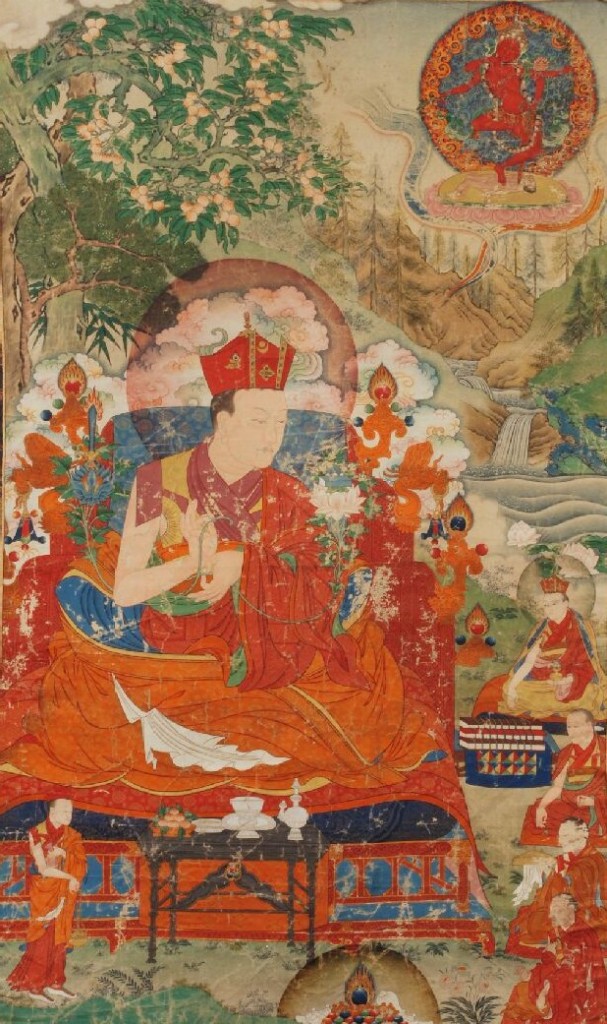
6th Shamarpa Mipham Chokyi Wangchuk
The Himalayan Art Resource website recently posted a picture of this marvellous 18th century thangka painting (click to enlarge) of Mipam Chokyi Wangchuk, The 6th Shamarpa (1584-1629). The 6th Shamarpa is an exceptionally important figure in the Karma Kagyu school, holding the lineage between the 9th and 10th Karmapas. His debating skills were so extraordinary that he was known as the “Pandita of the North, the Omniscient Shamarpa in whom Manjushri delights”. Famed for his deep insight, he had memorised fifty volumes of sutras and tantras by the age of seventeen, and was later to write ten texts explaining both the sutra and tantra traditions. He was the teacher of Desi Tsangpa, who ruled central Tibet, and it was while he was travelling in east Tibet – successfully playing the mediator in a regional disturbance – that he recognised and became the teacher of the 10th Karmapa, Choying Dorje. Subsequent travels took him to Nepal, where he taught Buddhism in the original Sanskrit to the king, Laxman Naran Singh, and to other devotees, and where he eventually died in the Helambu mountains, near a cave in which Milarepa, Tibet’s great yogi, had once meditated.
(more…)
Tags: 6th Shamarpa, Himalayan Art, Mahamudra, Mipam Chokyi Wangchuk, Red Hat Karmapa, Thangkas
Posted in Buddhist Iconography, Shamar Rinpoche | No Comments »
Thursday, January 13th, 2011
This beautiful painting, from the collection of the Rubin Museum of Art, New York, is in the Karma Gardri style of Eastern Tibet and dates from the 19th Century. It is based on the Guru Yoga in Four Sessions (Tib. tun shi lami naljor) meditation composed by the 8th Karmapa Mikyö Dorje (1507–1554). This practice is taught in Diamond Way Buddhist centres, after one has completed the Four Foundational Practices (Tib. ngondro) (click on image to enlarge).
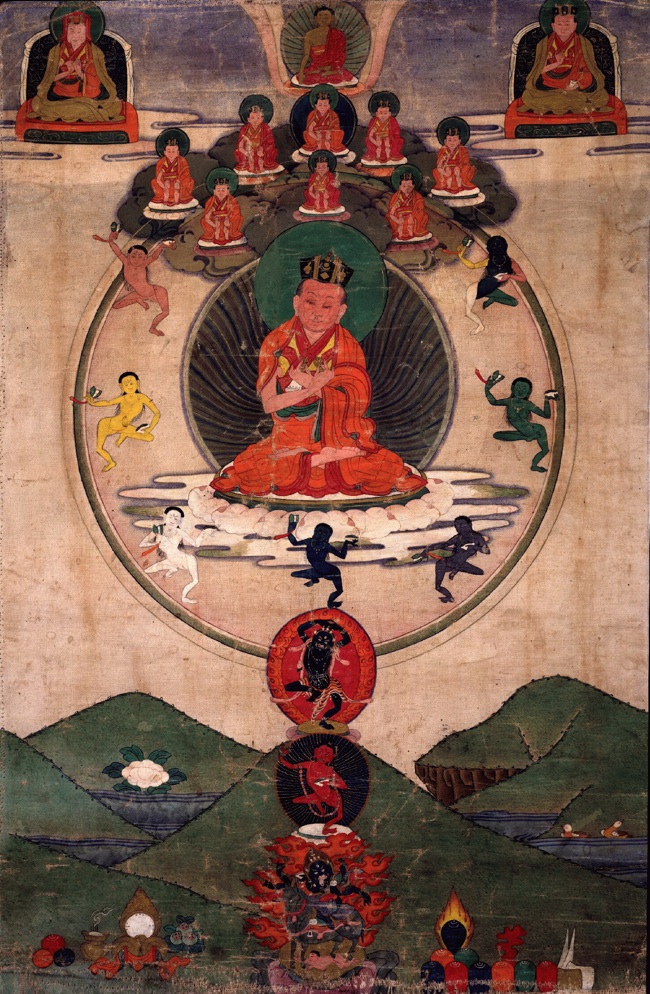
Thangka painting of the 8th Karmapa Mikyö Dorje
(more…)
Tags: 8th Karmapa, Karma Gardri, Mikyo Dorje, Thangkas, Tulku Urgyen Rinpoche
Posted in Buddhist Iconography, Diamond Way Buddhism | No Comments »
Monday, December 27th, 2010
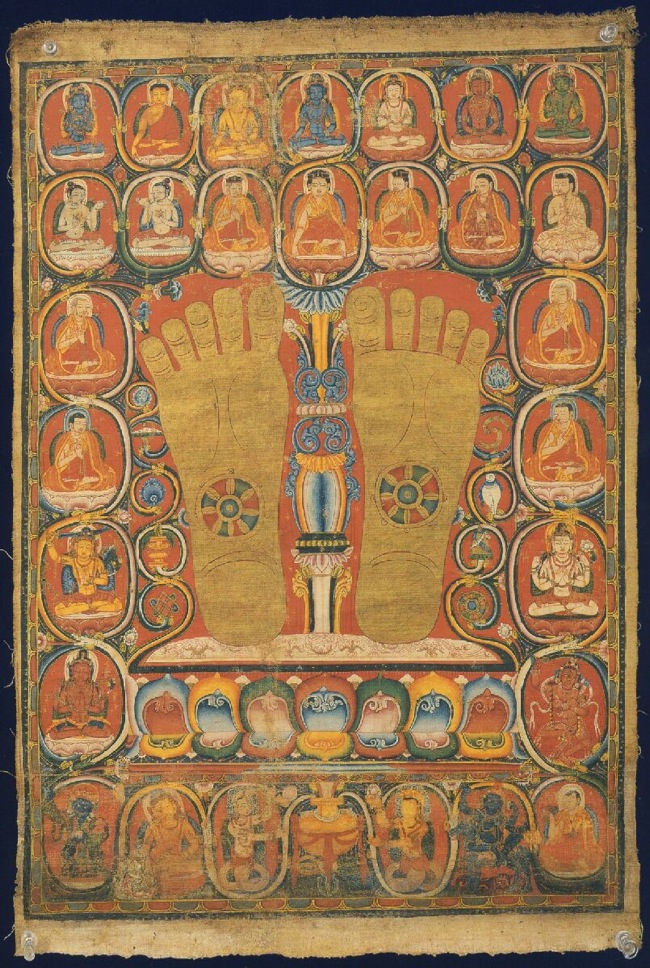
Footprints of the 3rd Karmapa Rangjung Dorje
This painting (click to enlarge), recently uploaded to the Himalayan Art Resource website, shows the footprints of the 3rd Karmapa, Rangjung Dorje (1284-1339). The footprints are accompanied by the early Marpa Kagyu lineage, predecessors to the Karma Kagyu lineage, along with Buddhas, protectors and wealth aspects. The custom of having drawings done based on the physical outline of a teachers feet appears to be an oral instruction coming down from Gampopa.
(more…)
Posted in Buddhist Iconography | No Comments »
Thursday, December 2nd, 2010
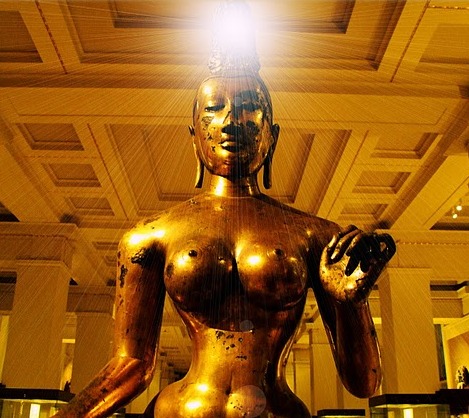
Tara in the British Museum (photo: Rafal Portas)
“A History of the World in 100 Objects” was a joint project of BBC Radio 4 and the British Museum, comprising a 100-part radio series written and presented by British Museum director Neil MacGregor. In 15-minute presentations broadcast on weekdays on Radio 4, MacGregor used objects of ancient art, industry, technology and arms, all of which are in the British Museum’s collections, as an introduction to parts of human history. The series began in January 2010 and was broadcast over 20 weeks. Several of the objects had Buddhist significance, which we’re sharing here on the blog.
(more…)
Tags: British Museum, Islam, Statues, Tara
Posted in Buddhist Iconography | No Comments »
Sunday, November 21st, 2010
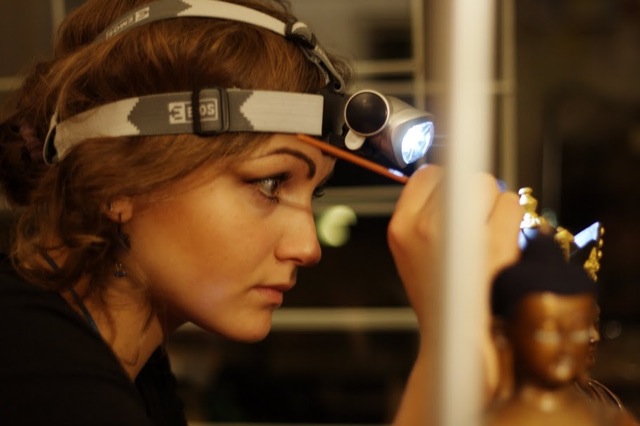
Intense concentration is needed to paint the fine details of the Buddha's eyes
When Lama Ole Nydahl visited London in September 2010 and blessed the newly-filled Buddha statues (see this blog entry) he recommended that we “open their eyes”. So earlier in November 2010, our London Buddhist Centre was transformed into a workshop, where a group of friends spent a long weekend working with these centre statues as well as a collection of smaller statues belonging to individuals. This delicate “eye-opening” process involves painting the heads and faces of the statues with gold and specially prepared paint, as well as adding precious stones in places such as the crowns and ornaments of certain forms. Leo Grzyb was invited from Slovakia to London to guide the workshop. Leo has spent several years studying traditional Kagyu Buddhist art under the close tutelage of Denzong Norbu, probably the greatest living master of the Karma Gardri style of thangka painting who received its transmission directly from the 16th Karmapa. We’d like to share some impressions from the workshop, click on the thumbnails below to enlarge.
(more…)
Tags: Denzong Norbu, Karma Gardri, Leo Grzyb, painting, Statues
Posted in Buddhist Iconography, Event Reports, London Buddhist Centre | No Comments »
Tuesday, November 9th, 2010

Borobudur Buddha head in the British Museum
“A History of the World in 100 Objects” was a joint project of BBC Radio 4 and the British Museum, comprising a 100-part radio series written and presented by British Museum director Neil MacGregor. In 15-minute presentations broadcast on weekdays on Radio 4, MacGregor used objects of ancient art, industry, technology and arms, all of which are in the British Museum’s collections, as an introduction to parts of human history. The series began in January 2010 and was broadcast over 20 weeks. Several of the objects had Buddhist significance, which we’d like to share here on the blog.
(more…)
Tags: BBC, Borobudur, British Museum, Buddha head, Islam, Java, Stamford Raffles, Stephen Batchelor
Posted in Buddhist Iconography | 1 Comment »

 Follow
Follow







